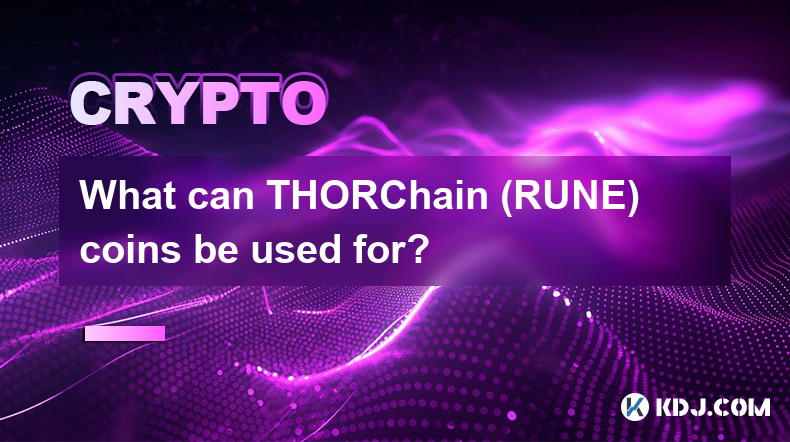-
 Bitcoin
Bitcoin $102,163.2697
6.02% -
 Ethereum
Ethereum $2,150.5881
19.90% -
 Tether USDt
Tether USDt $1.0002
-0.01% -
 XRP
XRP $2.2816
8.03% -
 BNB
BNB $621.9127
3.90% -
 Solana
Solana $160.9056
10.18% -
 USDC
USDC $0.9999
-0.01% -
 Dogecoin
Dogecoin $0.1919
12.84% -
 Cardano
Cardano $0.7428
12.87% -
 TRON
TRON $0.2549
2.81% -
 Sui
Sui $3.9413
20.96% -
 Chainlink
Chainlink $15.6333
15.00% -
 Avalanche
Avalanche $21.5896
11.76% -
 Stellar
Stellar $0.2857
10.70% -
 Shiba Inu
Shiba Inu $0.0...01415
12.36% -
 Bitcoin Cash
Bitcoin Cash $418.6912
17.25% -
 UNUS SED LEO
UNUS SED LEO $8.8588
1.73% -
 Pi
Pi $0.6406
10.47% -
 Hedera
Hedera $0.1918
10.27% -
 Toncoin
Toncoin $3.2151
7.17% -
 Hyperliquid
Hyperliquid $23.1281
10.85% -
 Litecoin
Litecoin $93.2866
5.66% -
 Polkadot
Polkadot $4.3578
11.64% -
 Monero
Monero $297.8483
6.26% -
 Dai
Dai $1.0002
0.00% -
 Bitget Token
Bitget Token $4.4492
5.91% -
 Ethena USDe
Ethena USDe $1.0003
-0.04% -
 Pepe
Pepe $0.0...01078
32.09% -
 Bittensor
Bittensor $417.8303
16.87% -
 Uniswap
Uniswap $5.6674
18.46%
What can THORChain (RUNE) coins be used for?
RUNE coins are used for staking to secure the network, voting on governance decisions, and facilitating decentralized on-chain swaps of crypto assets.
Dec 08, 2024 at 05:51 pm

What can THORChain (RUNE) coins be used for?
THORChain (RUNE) is a blockchain-based platform that enables the decentralized exchange of crypto assets. The native token of the THORChain ecosystem is RUNE, which plays a crucial role in various aspects of the platform's operations. In this article, we delve into the diverse use cases of RUNE coins, exploring their utility within the THORChain ecosystem and beyond.
1. Staking for Network Security and Rewards
One of the primary use cases of RUNE is for staking. RUNE holders can stake their tokens to participate in the platform's consensus mechanism, securing the network and validating transactions. In return, stakers earn rewards in the form of newly minted RUNE tokens. Staking contributes to the overall security and stability of the THORChain ecosystem while providing a passive income stream for RUNE holders.
2. Governance and Voting Rights
RUNE holders have the power to participate in the governance of the THORChain platform through voting. They can submit and vote on proposals that shape the future development and direction of the ecosystem. This includes decisions on protocol upgrades, treasury management, and the addition of new assets to the platform. By holding RUNE, users have a voice in determining the trajectory of THORChain.
3. Facilitating On-Chain Swaps
The core function of THORChain is to facilitate decentralized swaps of crypto assets. RUNE serves as the intermediary currency in these swaps, enabling the direct exchange of various tokens without the need for centralized intermediaries. Users can deposit RUNE into liquidity pools and earn trading fees based on the swap volume involving their assets. This incentivizes liquidity provision and ensures efficient and affordable cross-chain swaps.
4. Inter-Blockchain Liquidity
THORChain aims to bridge the liquidity of different blockchains, creating a unified decentralized exchange ecosystem. By providing inter-blockchain liquidity, RUNE facilitates the seamless transfer of assets between different chains. This eliminates the need for complex and expensive cross-chain bridges, enabling users to trade tokens across multiple networks directly through the THORChain platform.
5. Multi-Asset Collateral
RUNE can be used as collateral to secure loans on the THORChain platform. Users can deposit RUNE into designated pools and borrow other crypto assets against their collateral. This allows RUNE holders to leverage their assets without selling them and access additional capital for trading or other financial activities within the THORChain ecosystem.
6. Payment Gateway
THORChain's decentralized exchange infrastructure can be integrated as a payment gateway for businesses. By accepting RUNE as payment, merchants can tap into a global network of users and benefit from the low transaction fees and fast settlement times offered by THORChain. This use case expands the utility of RUNE beyond the realm of crypto trading and into real-world applications.
7. Developer Incentives
THORChain encourages the development of decentralized applications (dApps) within its ecosystem. RUNE serves as an incentive for developers to build and deploy their dApps on the THORChain platform. Developers can receive grants and rewards in RUNE for contributing to the growth and innovation of the THORChain ecosystem.
8. Ecosystem Integration
RUNE is increasingly being integrated into other blockchain projects and platforms. This integration allows RUNE to be used as a liquidity bridge for cross-chain swaps, collateral for decentralized lending, and a payment token within various decentralized applications. By expanding its presence in the broader blockchain ecosystem, RUNE enhances its overall value and utility.
Disclaimer:info@kdj.com
The information provided is not trading advice. kdj.com does not assume any responsibility for any investments made based on the information provided in this article. Cryptocurrencies are highly volatile and it is highly recommended that you invest with caution after thorough research!
If you believe that the content used on this website infringes your copyright, please contact us immediately (info@kdj.com) and we will delete it promptly.
- XRP Price Prediction: Will XRP See a Significant Price Rally?
- 2025-05-09 05:35:13
- Bitcoin (BTC) price rallies above $100,000 on strong regulatory and traditional finance fundamentals
- 2025-05-09 05:35:13
- U.S. President Donald Trump has given the crypto market another boost
- 2025-05-09 05:30:12
- Millions Of Bitcoins Return To Profit As Bitcoin Price Surges Above $99k
- 2025-05-09 05:30:12
- Ethereum (ETH) Price Surges Past $2,000 as Trump's Trade Deal and Pectra Upgrade Ignite Bullish Momentum
- 2025-05-09 05:25:12
- Cryptocurrency market pushes higher, buoyed by US-UK trade deal
- 2025-05-09 05:25:12
Related knowledge

Is Ethereum smart contract call fee high? How to optimize costs?
May 08,2025 at 09:35am
Is Ethereum Smart Contract Call Fee High? How to Optimize Costs? The world of Ethereum smart contracts has revolutionized the way we think about decentralized applications and blockchain technology. However, one of the most frequently discussed topics within this realm is the cost associated with executing smart contract calls. In this article, we will ...

Is Ethereum Layer2 fee low? How to use it cheaper?
May 08,2025 at 03:56am
The question of whether Ethereum Layer 2 solutions offer lower fees and how to use them more economically is a topic of great interest within the cryptocurrency community. Ethereum's Layer 2 solutions have been developed to address the high transaction fees and scalability issues associated with the main Ethereum network. In this article, we will delve ...

How to calculate Ethereum network fee? How to reduce transaction costs?
May 08,2025 at 02:15am
Understanding and managing Ethereum network fees is crucial for anyone involved in transactions on the Ethereum blockchain. The network fee, also known as gas fee, is the amount of Ether (ETH) required to successfully conduct a transaction or execute a smart contract on the Ethereum network. Calculating these fees and finding ways to reduce them can sig...

What is Ethereum Gas Fee? How to optimize Gas Fee to save costs?
May 08,2025 at 03:43am
Ethereum gas fees are a crucial aspect of interacting with the Ethereum blockchain. Understanding and optimizing these fees can significantly impact the cost-effectiveness of transactions and smart contract interactions. In this article, we will delve into what Ethereum gas fees are, how they are calculated, and provide detailed strategies for optimizin...

How to perform MOVE cross-chain transfer? What to do if the gas fee is too high?
May 07,2025 at 08:03pm
Introduction to MOVE Cross-Chain TransferCross-chain transfers have become an essential part of the cryptocurrency ecosystem, allowing users to move assets between different blockchain networks. One of the popular protocols for achieving this is the MOVE cross-chain transfer. This article will guide you through the process of performing a MOVE cross-cha...

How is the DYDX liquidation price calculated? How is the forced liquidation mechanism?
May 08,2025 at 06:49am
The DYDX liquidation price and the forced liquidation mechanism are crucial aspects of trading on the dYdX platform, a decentralized exchange that allows users to trade perpetual contracts. Understanding these concepts is essential for managing risk and maximizing potential returns. In this article, we will delve into the details of how the DYDX liquida...

Is Ethereum smart contract call fee high? How to optimize costs?
May 08,2025 at 09:35am
Is Ethereum Smart Contract Call Fee High? How to Optimize Costs? The world of Ethereum smart contracts has revolutionized the way we think about decentralized applications and blockchain technology. However, one of the most frequently discussed topics within this realm is the cost associated with executing smart contract calls. In this article, we will ...

Is Ethereum Layer2 fee low? How to use it cheaper?
May 08,2025 at 03:56am
The question of whether Ethereum Layer 2 solutions offer lower fees and how to use them more economically is a topic of great interest within the cryptocurrency community. Ethereum's Layer 2 solutions have been developed to address the high transaction fees and scalability issues associated with the main Ethereum network. In this article, we will delve ...

How to calculate Ethereum network fee? How to reduce transaction costs?
May 08,2025 at 02:15am
Understanding and managing Ethereum network fees is crucial for anyone involved in transactions on the Ethereum blockchain. The network fee, also known as gas fee, is the amount of Ether (ETH) required to successfully conduct a transaction or execute a smart contract on the Ethereum network. Calculating these fees and finding ways to reduce them can sig...

What is Ethereum Gas Fee? How to optimize Gas Fee to save costs?
May 08,2025 at 03:43am
Ethereum gas fees are a crucial aspect of interacting with the Ethereum blockchain. Understanding and optimizing these fees can significantly impact the cost-effectiveness of transactions and smart contract interactions. In this article, we will delve into what Ethereum gas fees are, how they are calculated, and provide detailed strategies for optimizin...

How to perform MOVE cross-chain transfer? What to do if the gas fee is too high?
May 07,2025 at 08:03pm
Introduction to MOVE Cross-Chain TransferCross-chain transfers have become an essential part of the cryptocurrency ecosystem, allowing users to move assets between different blockchain networks. One of the popular protocols for achieving this is the MOVE cross-chain transfer. This article will guide you through the process of performing a MOVE cross-cha...

How is the DYDX liquidation price calculated? How is the forced liquidation mechanism?
May 08,2025 at 06:49am
The DYDX liquidation price and the forced liquidation mechanism are crucial aspects of trading on the dYdX platform, a decentralized exchange that allows users to trade perpetual contracts. Understanding these concepts is essential for managing risk and maximizing potential returns. In this article, we will delve into the details of how the DYDX liquida...
See all articles




















































































